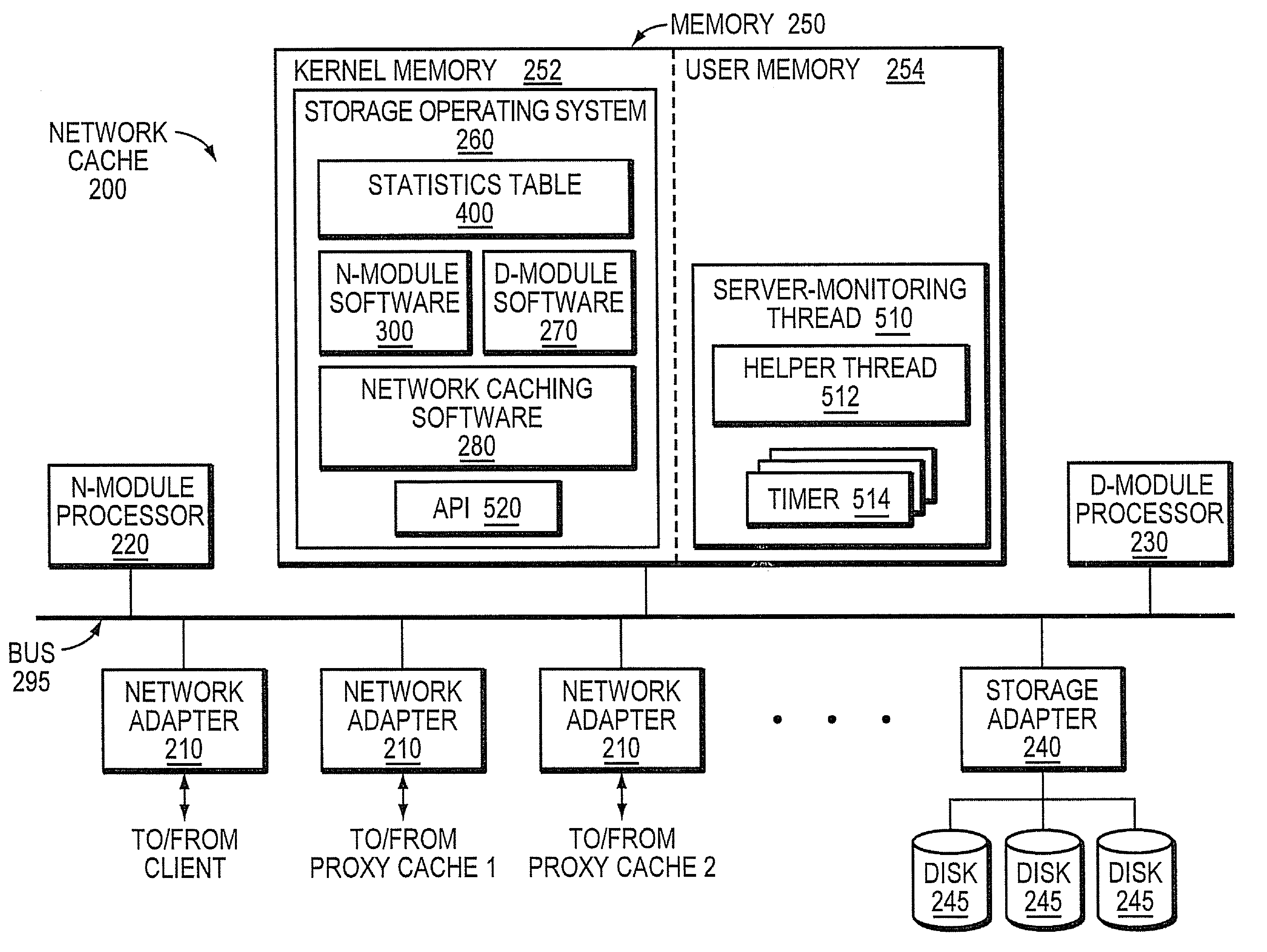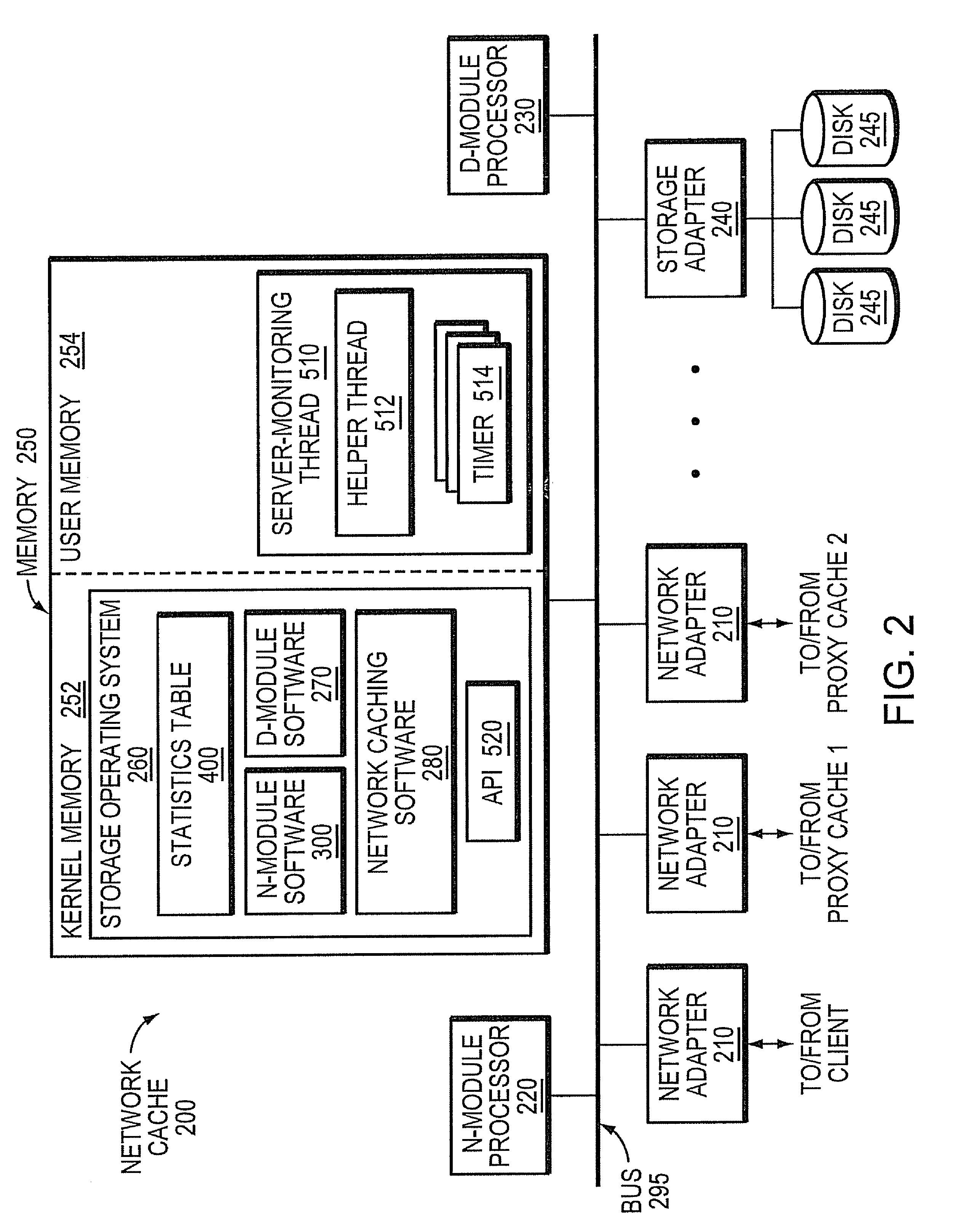Server monitoring framework
a server monitoring and server technology, applied in the field of server statistics, can solve the problems of excessive processing and memory resources of the network cache, affecting the operation of other kernel-level processes in the operating system, and conventional approaches may consume excessive memory resources, so as to achieve simplified code management and efficient resource utilization.
- Summary
- Abstract
- Description
- Claims
- Application Information
AI Technical Summary
Benefits of technology
Problems solved by technology
Method used
Image
Examples
Embodiment Construction
[0027]FIG. 1 illustrates an exemplary computer network 100 in which an illustrative embodiment of the invention may be deployed. The network includes at least one client 110 that is coupled to a network cache 200, e.g., through a network 120. In other embodiments, the client may be directly connected to the network cache. The cache 200 may be configured to operate in a forward or reverse proxy mode, and provides the client with faster access to a set of data objects, such as files, than if the client were to access those objects directly from an origin server 130, e.g., connected to the network 125.
[0028]The exemplary network 100 is arranged as a two-level cache hierarchy in which the network cache 200 stores a subset of the files contained in the higher-level proxy caches 160 and 170, respectively labeled “proxy cache 1” and “proxy cache 2.” The higher-level proxy caches, in turn, store a subset of the files available in the origin server 130. Besides the proxy caches 160 and 170, ...
PUM
 Login to View More
Login to View More Abstract
Description
Claims
Application Information
 Login to View More
Login to View More - R&D
- Intellectual Property
- Life Sciences
- Materials
- Tech Scout
- Unparalleled Data Quality
- Higher Quality Content
- 60% Fewer Hallucinations
Browse by: Latest US Patents, China's latest patents, Technical Efficacy Thesaurus, Application Domain, Technology Topic, Popular Technical Reports.
© 2025 PatSnap. All rights reserved.Legal|Privacy policy|Modern Slavery Act Transparency Statement|Sitemap|About US| Contact US: help@patsnap.com



